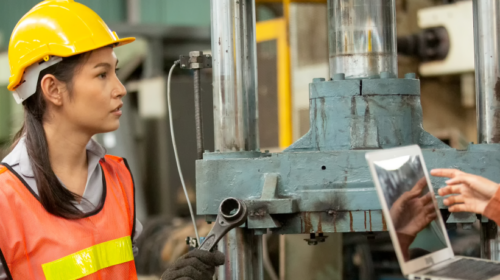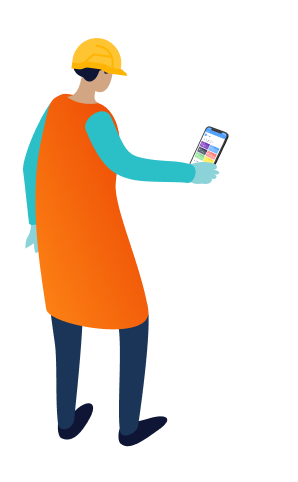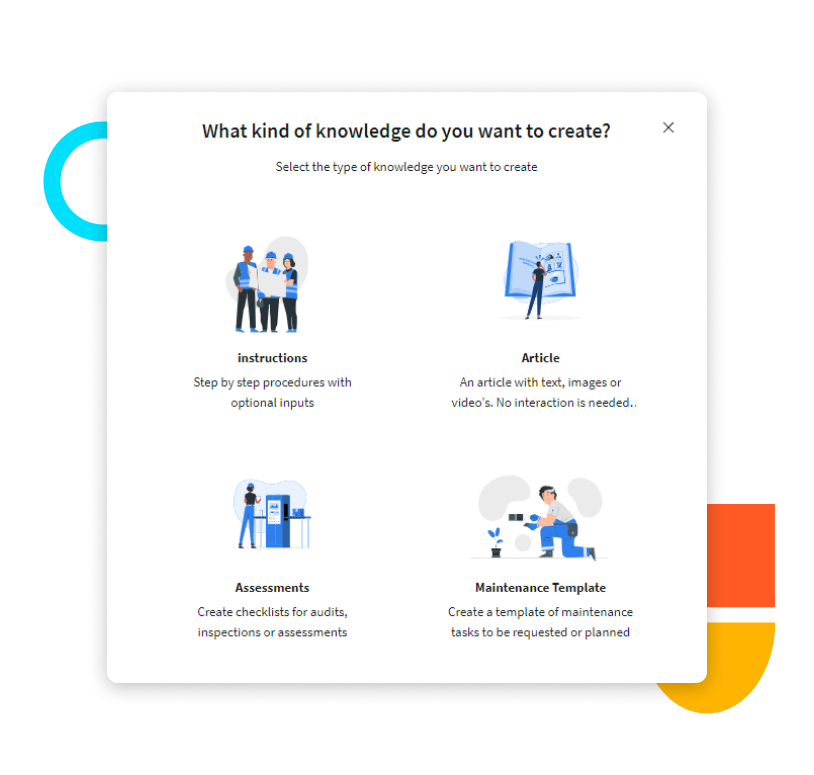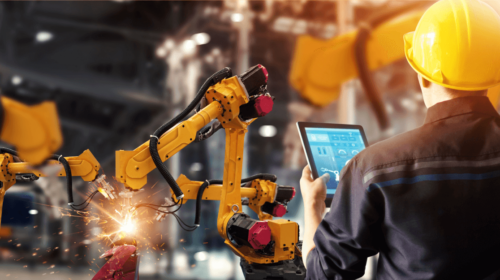
How Digital Technology Enables Manufacturers to Capture and Institutionalize Tribal Knowledge
In this post, we’ll explain how you can use a Connected Worker Platform like 4Industry to capture tribal knowledge and use it to train a new generation of shop floor workers

In manufacturing, tribal knowledge is exceptionally valuable and often essential to sustain production. However, despite its value, tribal knowledge is very difficult to capture in a written format that can be used to educate others.
Manufacturers are therefore dealing with something that’s inherently risky: once the person with the tribal knowledge leaves, the knowledge is gone forever.
These days, the operators with the most valuable tribal knowledge are slowly going into retirement, taking knowledge with them that is indispensable to maintain an efficient shop floor.
What is tribal knowledge in manufacturing?
Tribal knowledge is a term for the aggregated experiential knowledge that seasoned employees build up during decades of work experience. As opposed to institutional knowledge, tribal knowledge is not recorded in any concrete, shareable format like a work instruction or manual. In manufacturing, tribal knowledge specifically denotes the valuable experiential knowledge operators have about processes, equipment, and products.

What is an example of tribal knowledge in manufacturing?
We could give you a list of examples here but instead, we’ll tell you an old story that illustrates what tribal knowledge is and why it’s so valuable.
“A large passenger ship is having engine troubles. Its owners are unable to fix it and ask one of the passengers, an old man who’s been working on ships since he was a teenager, to help them out. The old man checks out the engine, grabs a wrench, an then hits a carefully selected spot. The engine starts running as usual immediately.”
This story tells us a three important things about tribal knowledge:
- It seems trivial but has a big impact
- It results from out-of-the-box thinking and may differ from what’s prescribed in official instructions
- It originates from decades-long experience
Why is tribal knowledge important in manufacturing?
These days, manufacturers face a daunting problem. Seasoned operators from the baby boomer generation are slowly going into retirement, taking with them a treasure trove of knowledge that’s essential to keep production flowing smoothly.
At the same time, a new generation is entering the workforce that needs to be educated quickly and thoroughly to be able to perform as well as their seasoned counterparts.
So, what’s the problem here? Can’t the former educate the latter?
The short answer is: no, not really. Naturally, shadowing is a common practice that enables greenhorns to learn from their experienced colleagues. But this can only go on for a limited amount of time and is insufficient to close the skills gap between old and young.
Taking operators away from the shop floor to interview them to document their tribal knowledge isn’t an option either. Often, taking that operator away from the shop floor means production has to be halted or slowed down. Furthermore, capturing knowledge in this way is very time-consuming, even if it involves a single person.
A 3-step plan to unlock the value of tribal knowledge
A Connected Worker Platform like 4Industry provides manufacturers with a much-needed solution to the problem of tribal knowledge.
Our solution is threefold.
- First, tribal knowledge has to be captured in an efficient way.
- Then, it must be documented and standardized.
- And lastly, its value should be leveraged for onboarding and training.
Let’s explore these steps one by one.

- Capturing tribal knowledge
To capture tribal knowledge, we do not recommend taking away operators from the shop floor to be interviewed for hours at a time. Instead, we take quite the opposite approach; tribal knowledge should be captured every day in small bits.
In our experience, it’s a best practice to assign operators a mandatory daily survey they have to fill in at the end of their shift.

A mobile-enabled Connected Worker Platform (CWP) can automatically send this survey to operators and monitor its completion.
In it, operators can record how their line ran that day, which problems they encountered, and what they did to tackle those. All this data is stored in the CWP’s cloud-based database, giving CI teams a permanent record of problems and their (suggested) fixes.
This approach has a significant side-benefit: It enables CI teams to organize and prioritize their knowledge conservation efforts. Instead capturing any and all knowledge that’s present in a factory, they can focus on what’s most essential to keep the line flowing.
- Documenting and standardizing tribal knowledge
Now that manufacturers have an extensive database of tribal knowledge, it’s ready to be turned into usable standard operating procedures (SOPs), work instructions, and one point lessons (OPLs).
To make this process as fast and frustration-free as possible, 4Industry has designed a drag-and-drop knowledge builder that can design any documentation in a matter of minutes. This can then be reviewed and approved by production associates and standardized factory-wide. To guarantee everyone is up to speed with a new procedure, operators can be alerted about it by a push notification. Later on, a survey can be sent to them to check if they’ve sufficiently familiarized themselves with it.

- Leveraging documented tribal knowledge for onboarding and training
In these days of generational shift, tribal knowledge is largely useless if it can’t be used to train young frontline workers.
Luckily, a Connected Worker Platform takes care of this as well.
It all comes down to the way knowledge is presented in CWPs. Media-rich SOPs and work instructions enable inexperienced operators to execute unfamiliar tasks autonomously. Manufacturers can therefore design an entirely digital onboarding program that’s followed on the shop floor instead of in a classroom. In this way, workers learn in bite-sized chunks that are only relevant to the task at hand.
Next to speeding up training immensely, this approach also makes training much more enjoyable than legacy methods. Sleep-inducing classroom training becomes largely obsolete, being replaced by a much more engaging and practical experience.
Related Articles

How IoT is Used in Manufacturing Explained in 4 Steps


